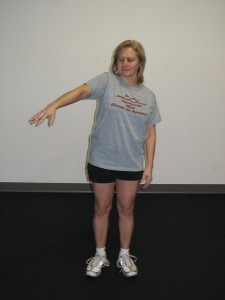Brian Schiff’s Blog
Injury Prevention, Sports Rehab & Performance Training Expert
If you have ever experienced shoulder pain (whether sudden or chronic) you have probably heard people or docs throw out the terms tendinitis, bursitis, or partial and full thickness tears. In this post, I will attempt to summarize these and delineate as best I can between the symptoms you may experience.
Bursitis – inflammation of the subdeltoid bursa (fluid filled sac) beneath the deltoid. Bursae are in place to cushion the soft tissue and prevent rubbing or friction. They lie between tendon and bone or between the tendon and skin. In the shoulder, signs of bursitis include:
- Pain and tenderness along the upper arm with radiating pain down the to the elbow in many cases
- Pain lying on the affected shoulder (esp. at night)
- Pain with repetitive motion (especially overhead and behind the back)
- Warmth and swelling along the middle deltoid
Tendinitis – the tendon itself becomes inflamed and swollen (usually the supraspinatus) and may become trapped or start rubbing beneath the acromion (top of the shoulder blade) and then becomes an impingement problem (known as impingement syndrome). Pain may also be felt along the biceps tendon as it may undergo undue stress and strain in relation to a cuff issue. It is also important to note that bursistis often accompanies tendinitis. Typical symptoms include:
- Point tenderness at or near the top of the shoulder or over the biceps tendon as it meets the shoulder
- Pain and joint soreness along the front of the shoulder
- Pain that worsens with elevating the arm above 90 degrees or moving it away from or behind the body
- Pain with lying on the affected shoulder
- Pain tucking in your shirt, fastening a bra or styling your hair
Tear – defined by a disruption in the quality or integrity of the muscle and or tendon. Tears are typically quantified by the location (articular or bursal side) size (in centimeters) and degree (partial or full thickness). Not all tears are created equal – that is a fact.
I have seen small tears (less than 1-2 cm) create equisite pain and dysfunction, while large tears (greater than 3 cm) may produce less pain and limitations in daily activities for folks. Hallmark symptoms of a tear include:
- Pain at night that interrupts sleep
- Persistent dull ache or even throbbing pain that is not affected by rest or positional changes
- Significant weakness or even muscle atrophy (look at the shoulder blade from behind or int he mirror)
- Loss of elevation and arm rotation overhead and behind the back
- A positive shrug sign (see below as excessive upper trap work that compensates to elevate the arm in light of a torn rotator cuff muscle)

Positive Shrug Sign
Some research suggests up to 90% of tears will worsen over time. Tears do not spontaneously heal. With that said, many respond well to conservative rehab with an emphasis on restoration of motion, appropriate strengthening and avoidance of abusive activity.
The prescription for healing bursitis and tendinitis is much the same. However, catching the “itis” early on and using ice, rest and anti-inflammatory medication as prescribed can often cure it in weeks and prevent further damage. Pain shouldreally guide all activity and exercise progression. The other forgotten friend is ice – whether acute or chronic I advise daily icing for pain relief.
Want more answers to rotator cuff issues? Visit my site at www.rotatorcufftraining.com.

